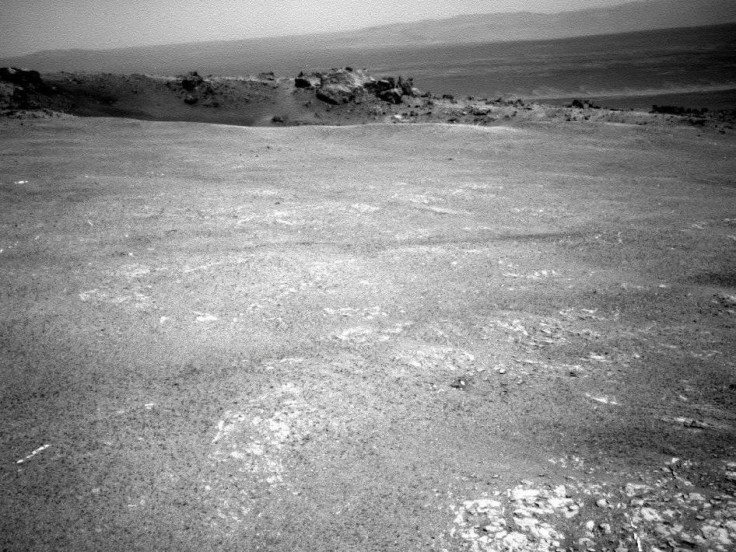Mars Rover Arrives at Unseen Crater; May Find Habitable Environment [PHOTOS]

After nearly three years, NASA's Mars Rover Opportunity finally reached one of its main destinations, a previously unseen crater called Endeavour, said NASA.com.
While at the Endeavour crater, the golf-kart sized rover will study rocks never seen before by human eyes.
Endeavour, which is 14 miles (22 kilometers) in diameter, is a lot bigger than the Victoria crater that NASA left in 2008. Scientists are looking for older rocks and terrains than the ones Rover saw while on Victoria and other surfaces on the Red planet.
NASA had set a goal for Opportunity to reach Endeavour in 2008.
NASA chose the Endeavour crater as Opportunity's next destination after the Mars Reconnaissance Orbiter detected clay minerals that may have formed in an early warmer and wetter period. According to NASA researcher Matthew Golombek, clay minerals form in wet conditions. This information may lead the team to find out about a possible habitable environment.
"NASA is continuing to write remarkable chapters in our nation's story of exploration with discoveries on Mars and trips to an array of challenging new destinations," NASA Administrator Charles Bolden said.
"Opportunity's findings and data from the upcoming Mars Science Laboratory will play a key role in making possible future human missions to Mars and other places where humans have not yet been."
After launching in 2003, Opportunity has been on Mars for seven years. Its sister ship, Spirit, was taken out of commission. The twin rovers were originally slated for a three-month mission.
NASA scientists named Opportunity's landing point, Spirit Point, after the fallen twin rover.
"Our arrival at this destination is a reminder that these rovers have continued far beyond the original three-month mission," John Callas, Mars Exploration Rover project manager at NASA's Jet Propulsion Laboratory, said.
Recently, NASA announced the possible discovery of flowing water on the planet. The space agency has even bigger goals with hopes to land a human being on the planet by the 2030s.
Follow Gabriel Perna on Twitter at @GabrielSPerna
© Copyright IBTimes 2024. All rights reserved.











